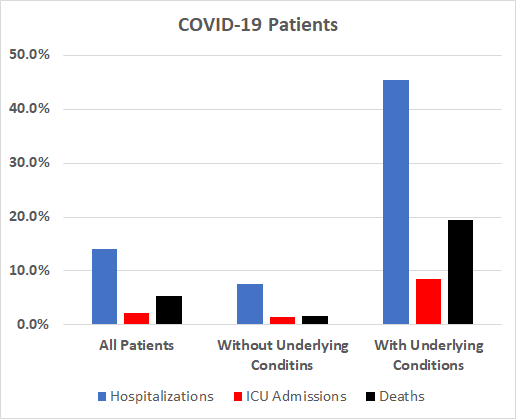The pandemic regularly takes center stage in Zoom calls with friends and family. As I’ve heard varying claims about the disease and its treatment, I decided to consult with the experts to dispel some common myths. My chief sources are the Center for Disease Control (CDC), and Dr. Anthony Fauci, Director of the National Institute of Allergy and Infectious Diseases (NIAID).
Myth #1: Since young people aren’t hurt by the disease, they don’t have to worry about getting infected.
Young people generally have immune systems that function better than older folks. As such, they are far less likely to develop symptoms or risk severe consequences or death when infected by COVID-19. HOWEVER, they can become efficient carriers of the disease for weeks and months after exposure. Moreover, the folks with whom they interact also participate in spreading the disease. Somewhere along the line, this chain of infection will reach people who will become seriously ill and/or die. As Dr. Fauci reminds us, we cannot stop the spread of the disease unless we all pull together and do our parts.
Myth #2: The only people who really need to be worry about COVID-19 are those with pre-existing conditions.
The CDC evaluated data on 1.3 million laboratory-confirmed cases of COVID-19 during the period between January 22 and May 30. They looked at differences in hospitalization rates, ICU admissions, and deaths for patients with and without underlying conditions (e.g., heart disease, hypertension, pulmonary disease, diabetes, renal disease, immunosuppression, obesity). Here’s what they found:
Patients with underlying conditions are six times more likely to be hospitalized and twelve times more likely to die from the coronavirus than healthy individuals.
A report from Los Angeles County confirms this data. Over 90 percent of their COVID-19 deaths tied to patients with chronic medical conditions. The report noted that these conditions are commonplace across all age groups. While the majority of deaths were patients over the age of 65, nearly one-fourth were aged 41-64, and three percent were between 18 and 40.
Myth #3: Once we get vaccinated, we won’t have to worry about getting infected with COVID-19.
It is too early to render commentary on either the efficacy or durability of COVID-19 vaccines under development. That data will not be available until the completion of Phase III trials at the earliest. Even then, it will take widespread usage to validate results. As of this writing, Dr. Fauci expressed the following expectation regarding a vaccine’s ability to prevent infection:
“I would be very happy with 70, 75 percent, and I would be accepting of 50 to 60 percent, because that would be value added, superimposed upon, and complementary, to public health measures.”
Stated differently: Even after getting vaccinated, I may still have upwards of a 50% chance of getting infected if exposed to the virus.
Dr. Fauci also noted that scientists do not know how long the protection will last. Like the flu shot, it may simply get us through the worst of the seasonal infection rates. We may need to get booster shots to bolster our immune systems thereafter. Even if we are among the fortunate ones whose bodies respond favorably to inflection, we will still need to implement public health measures to protect those who aren’t so fortunate. Those measures include:
- Visiting family and friends outdoors whenever possible (although virtual contact is preferred).
- Wearing masks over the nose and mouth when interacting or sharing space with people who do not live in our households.
- Maintaining at least 6 feet in social distance from others.
- Avoiding large gatherings, especially those held indoors.
- Washing hands thoroughly and often while still avoiding touching our faces.
- Limiting contact with commonly touched surfaces or shared items and using disinfectant to sanitize them.
Myth #4: With accelerated vaccine development, it may not be safe to get inoculated.
Dr. Fauci lays this concern to rest. The vaccines in the current pipeline follow the same safety protocols that have been in effect for decades. Today’s technology enables vaccine development to proceed at a much faster rate than the past. Moreover, the government has made preemptive investment in manufacturing capability to shorten the time between the completion of Phase III trials and availability to the general public.
Sources:
- https://www.bloomberg.com/news/videos/2020-08-07/balance-of-power-dr-anthony-fauci-video
- https://www.statista.com/chart/22018/coronavirus-pre-existing-conditions/
- https://news.yahoo.com/coronavirus-deaths-details-preexisting-conditions-181855930.html
- https://news.bloomberglaw.com/coronavirus/fauci-says-fast-development-of-vaccines-doesnt-threaten-safety
